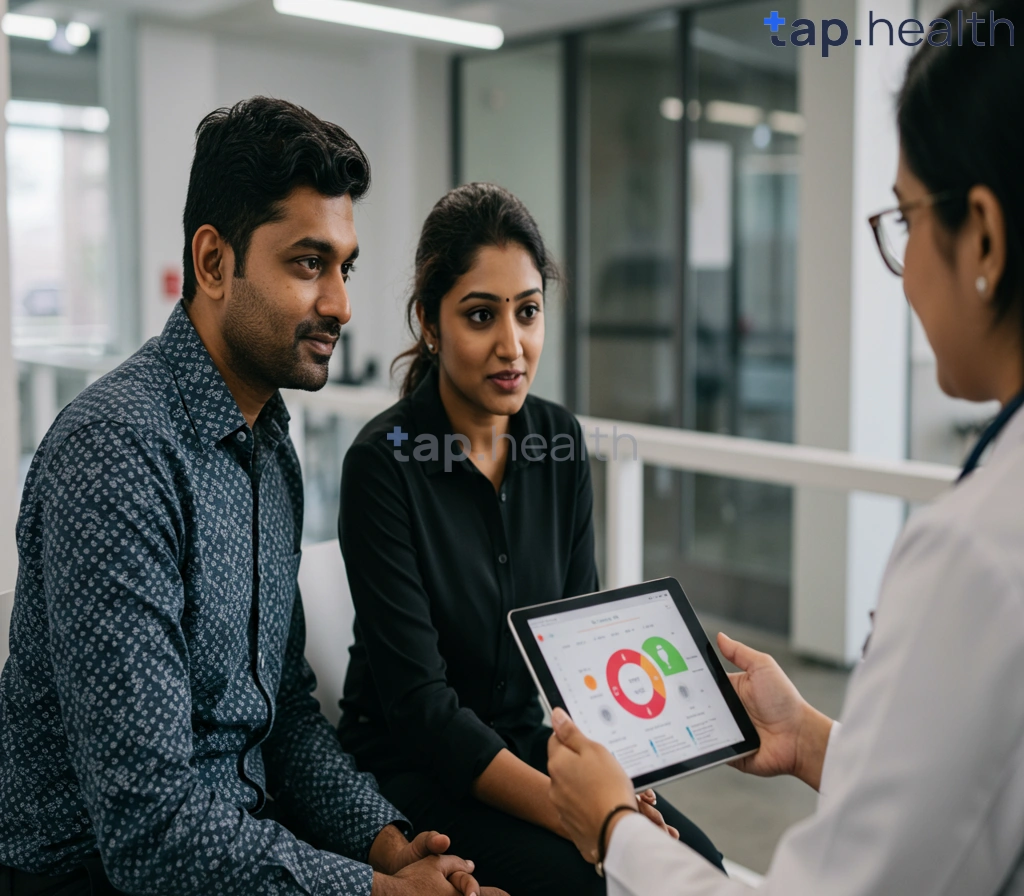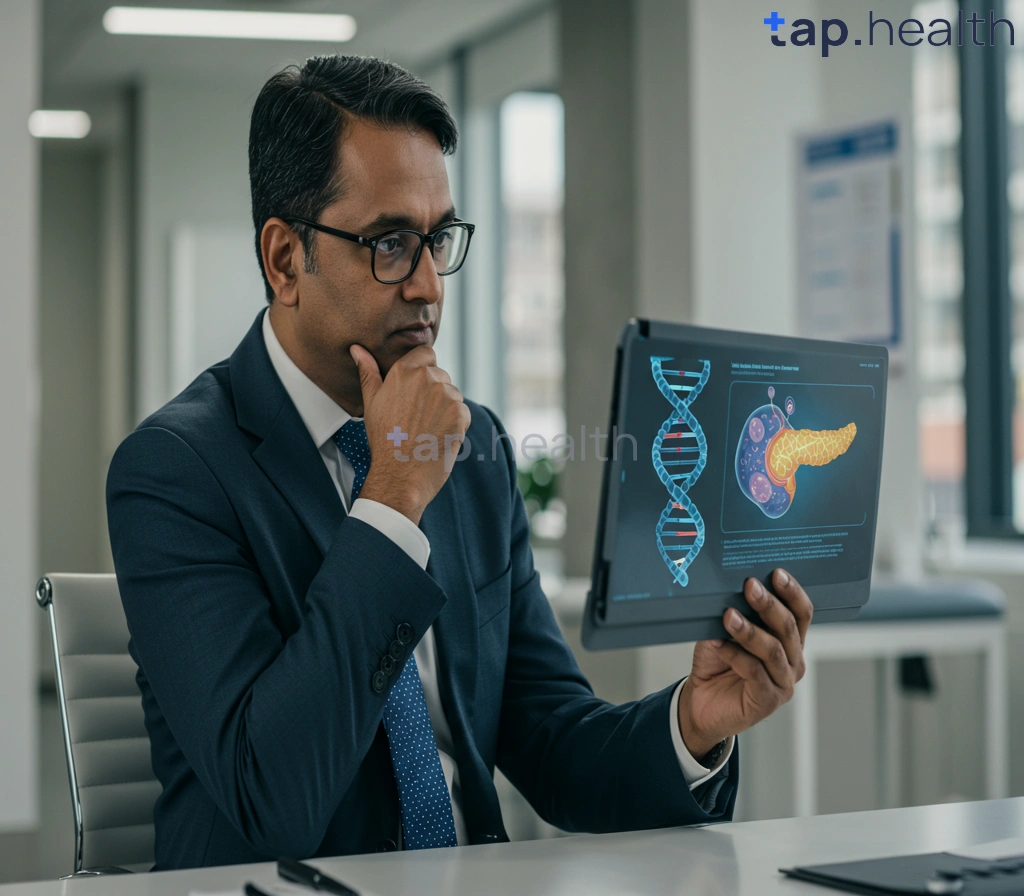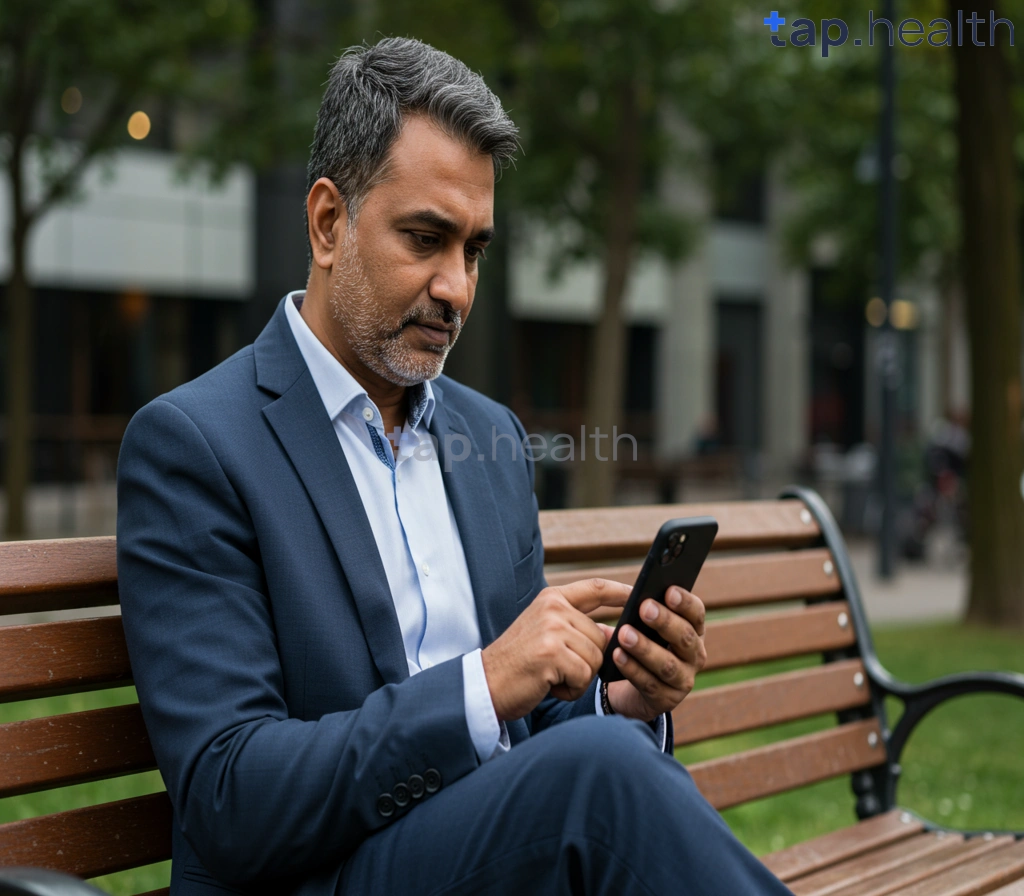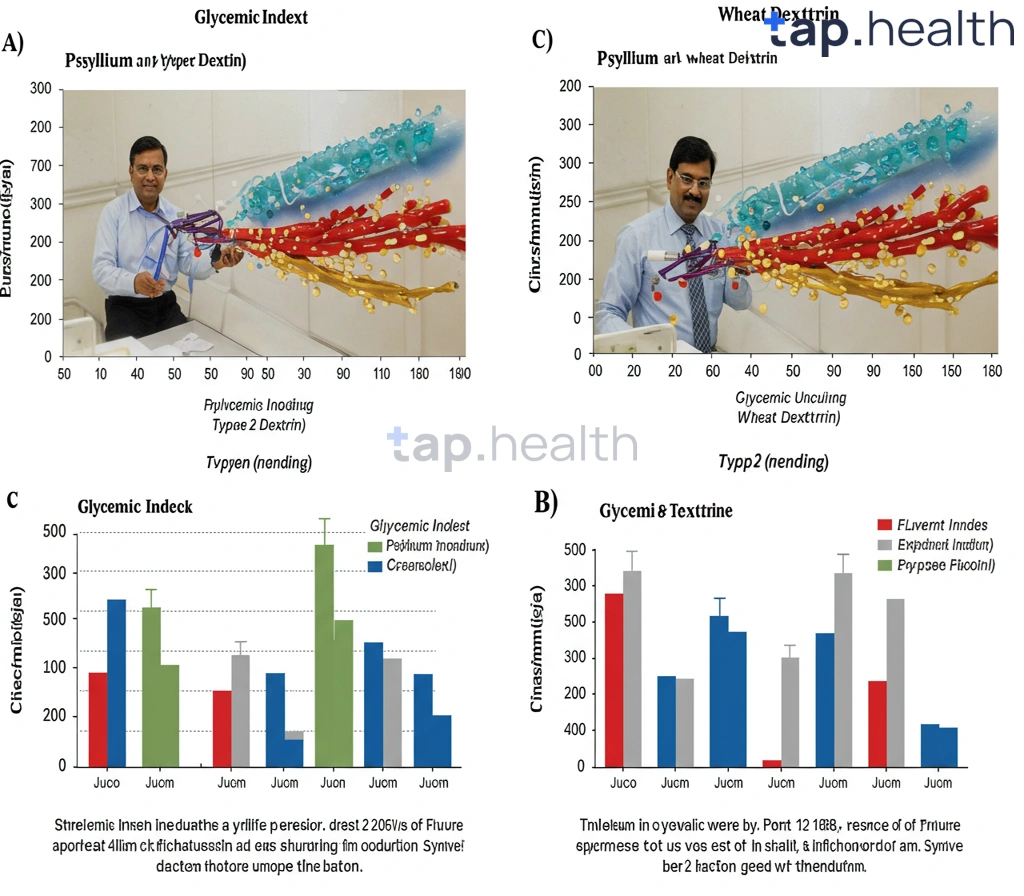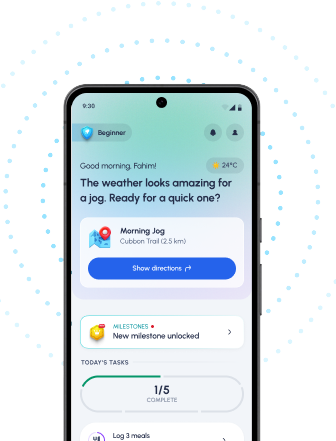Table of Contents
- Decoding Diabetes: What Radio Waves Reveal
- Unlocking Diabetes Insights Through Radiofrequency Signals
- How Radio Waves Help Diagnose and Manage Diabetes
- Diabetes Management: Exploring the Power of Radio Waves
- Advanced Diabetes Detection: Radio Wave Technology Explained
- Frequently Asked Questions
- References
Ever wondered if there’s more to understanding diabetes than blood sugar tests? Imagine a world where non-invasive technology could offer a deeper, more nuanced picture of your condition. This is the exciting promise of Unlocking Diabetes Insights: What Your Radio Waves Reveal. We’ll explore the groundbreaking field of radio wave analysis and how it’s being used to detect subtle changes within the body that might indicate early signs of diabetes or help manage existing conditions. Get ready to discover a new frontier in diabetes care – a future where simple, painless monitoring could revolutionize your health journey. Let’s dive in!
Decoding Diabetes: What Radio Waves Reveal
Shockingly, a staggering 50% of diabetes cases worldwide remain undiagnosed, according to the International Diabetes Federation. This alarming statistic highlights the urgent need for early detection, especially in high-risk regions like India and other tropical countries. But what if there was a less invasive, more readily available method for screening? Emerging research suggests that radio waves might hold the key.
Non-Invasive Diabetes Detection: The Promise of Radio Waves
Scientists are exploring the potential of radio waves to detect subtle changes in the body’s electrical properties associated with diabetes. These changes, often undetectable through traditional methods, could be revealed through advanced radio wave analysis. Imagine a simple, non-invasive test using readily available technology, potentially revolutionizing diabetes screening in resource-constrained settings prevalent across many Indian and tropical regions. This technology could be particularly impactful in rural areas with limited access to sophisticated diagnostic equipment. Understanding the vascular complications is also crucial; learn more about how diabetes affects blood flow.
Early Detection: A Lifesaver
Early detection is crucial in managing diabetes and preventing serious complications. The high prevalence of undiagnosed diabetes in India and tropical countries underscores the need for innovative, accessible screening methods. Radio wave technology offers a potential pathway towards achieving this goal. The implications for public health are significant, potentially saving lives and reducing the long-term burden of diabetes-related illnesses. It’s also important to address concerns about potential links between diabetes and other health issues; for example, read more about the question: Does Diabetes Cause Cancer?.
Actionable Steps for Indian & Tropical Regions
Invest in research and development of radio wave-based diabetes detection technologies tailored to the specific needs of these regions. Promote awareness amongst healthcare professionals and the public about the potential benefits of this innovative approach. Advocate for policies that support wider adoption and accessibility of this promising technology. By embracing these steps, we can significantly improve diabetes management and reduce the substantial health and economic burden it places on communities across India and the tropics.
Unlocking Diabetes Insights Through Radiofrequency Signals
The global burden of diabetes is staggering. Current projections indicate a rise from 536.6 million people aged 20-79 with diabetes in 2021 to a projected 783.7 million by 2045, representing a significant increase in prevalence from 9.8% to 11.2%. This alarming trend is particularly relevant in India and other tropical countries, where diabetes prevalence often mirrors or exceeds global averages. Understanding and managing this epidemic requires innovative approaches.
The Promise of Radiofrequency Technology
One such promising approach lies in the application of radiofrequency (RF) signals for non-invasive diabetes detection and monitoring. Early research suggests that RF signals can detect subtle changes in tissue properties associated with diabetes, providing a potential alternative to traditional methods. This technology is especially valuable in resource-limited settings within India and tropical countries where access to advanced diagnostic tools is often limited. The ability to use RF signals for early detection could drastically improve the prognosis for millions. The potential for improved lifestyle management through these technological advances is significant, as discussed in How Can New Technological Advances Improve Diabetes Lifestyle?.
Practical Applications and Future Directions
Further research is needed to refine the use of RF signals for diabetes management. This includes developing more sensitive and specific RF sensors, coupled with sophisticated algorithms for data analysis. The potential for early detection and personalized treatment plans, especially for individuals in high-risk populations across India and tropical regions, is enormous. This technology offers hope for a future where diabetes management is more accessible, affordable, and effective. Improving health outcomes is significantly aided by proper education, as highlighted in How Diabetes Education Enhances Health Outcomes – Tap Health.
Call to Action: Investing in a Healthier Future
The development and implementation of RF-based diabetes detection and monitoring tools requires significant investment in research and development. Collaboration between healthcare professionals, technology developers, and government agencies within India and other tropical countries is crucial. Let’s work together to leverage the potential of this technology and transform the lives of those affected by this pervasive disease.
How Radio Waves Help Diagnose and Manage Diabetes
Non-Invasive Diagnostics with Radio Waves
Diabetes, a growing concern globally, disproportionately affects the working-age population. Statistics show that 61% of people with diabetes are aged between 20-64 years, a crucial demographic for economic productivity, particularly in rapidly developing Indian and tropical countries. Source Early and accurate diagnosis is paramount. Fortunately, advancements in medical technology are harnessing the power of radio waves to revolutionize diabetes care. Techniques like microwave sensing offer non-invasive methods for monitoring glucose levels, reducing the need for frequent finger-prick tests, a significant improvement in patient comfort and compliance.
Improving Diabetes Management Through Radio Frequency
Beyond diagnosis, radio waves also play a role in managing the condition. Specific radio frequencies can be employed in therapies aimed at stimulating insulin production or improving insulin sensitivity. These technologies are still evolving, but their potential to improve the lives of millions, especially in regions with limited access to advanced healthcare, is immense. The development and accessibility of these technologies are especially important in regions with high diabetes prevalence rates. Further advancements in technology, such as the integration of AI in monitoring and managing diabetes, are also contributing to better patient outcomes.
Actionable Steps for Better Diabetes Care in India and Tropical Countries
Individuals in India and tropical countries should actively seek information about the latest advancements in diabetes diagnosis and management. Stay informed about available technologies utilizing radio waves and discuss their suitability with your healthcare provider. Early detection and proactive management are key to mitigating the long-term complications associated with diabetes. Regular checkups and adopting a healthy lifestyle remain essential components of effective diabetes care. Don’t hesitate to ask your doctor about the newest non-invasive testing options. While technological advancements offer hope, understanding the potential for how to reverse diabetes permanently through lifestyle changes remains crucial for long-term health.
Diabetes Management: Exploring the Power of Radio Waves
Non-Invasive Glucose Monitoring: A Technological Leap
The staggering cost of diabetes in the U.S. – an estimated $327 billion annually in direct medical costs and lost productivity – underscores the urgent need for innovative management solutions. This is particularly crucial in Indian and tropical countries, where diabetes prevalence is rising rapidly and access to advanced healthcare can be limited. One promising area of research lies in the application of radio waves for non-invasive glucose monitoring. This technology offers the potential to revolutionize diabetes management by providing continuous, painless glucose readings without the need for finger-prick testing.
Radio Wave Technology: How it Works
Radio wave-based glucose monitoring utilizes the unique dielectric properties of glucose. Changes in blood glucose levels alter the electrical properties of tissues, and these subtle variations can be detected using specialized radio frequency sensors. While still under development, this technology holds immense potential for improving patient compliance and quality of life, especially in resource-constrained settings. Imagine the impact of continuous glucose monitoring for individuals in remote areas with limited access to healthcare facilities or those struggling with the inconvenience of regular finger-prick testing.
The Future of Diabetes Care in India and Tropical Countries
The adoption of radio wave-based glucose monitoring could significantly reduce the burden of diabetes in India and other tropical countries. Early detection and continuous monitoring are vital for effective diabetes management, and this technology offers a pathway toward achieving these goals. Further research and development are crucial to make this technology more accessible and affordable. The potential benefits extend beyond improved health outcomes; they also include reduced healthcare costs and increased productivity for individuals living with diabetes. We encourage further exploration of this promising technology as a crucial step towards better diabetes management in our region. For more established methods of management, you might find our article on 10 Proven Tips for Effective Diabetes Management helpful. Additionally, the challenges of managing diabetes can change as we age, so you may want to explore our piece on Managing Diabetes as You Age: Challenges and Solutions.
Advanced Diabetes Detection: Radio Wave Technology Explained
Early Detection: A Crucial Weapon Against Diabetes in India
India faces a significant challenge with the alarmingly high number of early-onset diabetes cases, often manifesting between ages 25 and 40. This underscores the urgent need for advanced detection methods. Radio wave technology offers a promising avenue, providing a potentially non-invasive and early diagnostic tool. This technology leverages the subtle changes in the body’s electrical properties associated with the onset of diabetes.
How Radio Waves Detect Early-Stage Diabetes
The technique involves using low-level radio waves to measure the dielectric properties of the skin. These properties change as blood glucose levels fluctuate, offering a potential indicator of impaired glucose metabolism, even before classic symptoms appear. This early detection is vital in tropical countries like India, where environmental factors can exacerbate diabetes risk. Unlike traditional methods reliant on blood glucose levels, radio wave technology could provide a more continuous and less invasive monitoring approach. This is particularly beneficial for individuals in high-risk groups, allowing for proactive management and potentially preventing severe complications.
The Future of Diabetes Management in India and Beyond
Research and development in this field are continually advancing, leading to smaller, more portable devices suitable for widespread use. The potential for early diagnosis using radio wave technology holds immense promise for improving diabetes management, especially in regions like India with a high prevalence of early-onset cases. Further research and clinical trials will be crucial in validating the technology’s effectiveness and establishing its role in mainstream diabetes care. Early adoption and investment in this technology could significantly impact the lives of millions across India and other tropical regions. While this technology shows great promise, exploring other avenues like How artificial intelligence technology can be used to treat diabetes? is also crucial for comprehensive diabetes management. The potential of AI in diabetes care is vast, and advancements in this field, such as those explored in How AI Can Help You Reverse Diabetes, could revolutionize treatment strategies alongside technological advancements like radio wave detection.
Frequently Asked Questions
Q1. How can radio wave technology help detect diabetes?
Radio wave technology detects subtle changes in the body’s electrical properties linked to diabetes. This non-invasive method offers an alternative to traditional, often invasive, testing.
Q2. What are the benefits of using radio waves for diabetes monitoring?
This technology allows for continuous, painless glucose monitoring, leading to earlier detection, improved disease management, potentially reduced healthcare costs, and increased productivity for individuals with diabetes. It may also improve patient compliance with treatment.
Q3. Is this technology widely available now?
Currently, this technology is still under development. Further research, investment, and policy support are needed to make it widely accessible and affordable.
Q4. What are the potential challenges or limitations of this technology?
The technology needs further research and development before widespread implementation. Affordability and accessibility are key challenges that need to be addressed to maximize its impact, particularly in regions with high rates of undiagnosed diabetes.
Q5. Why is this technology particularly important in countries like India?
Countries like India have high rates of undiagnosed diabetes. Early detection through this non-invasive method could significantly improve diabetes management and reduce the disease’s health and economic burden in these regions.
References
- A Practical Guide to Integrated Type 2 Diabetes Care: https://www.hse.ie/eng/services/list/2/primarycare/east-coast-diabetes-service/management-of-type-2-diabetes/diabetes-and-pregnancy/icgp-guide-to-integrated-type-2.pdf
- What is Diabetes: https://www.medschool.lsuhsc.edu/genetics/docs/DIABETES.pdf
